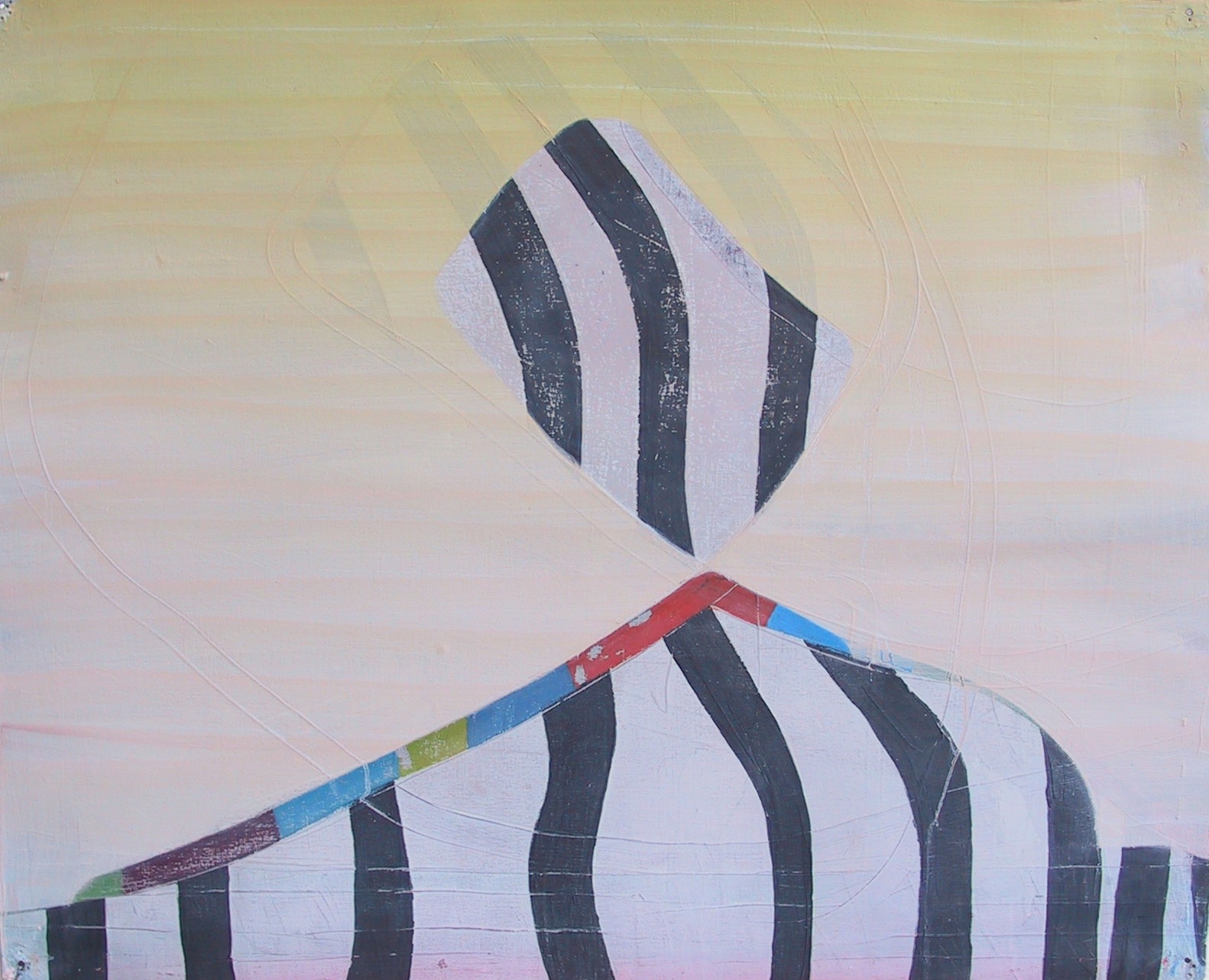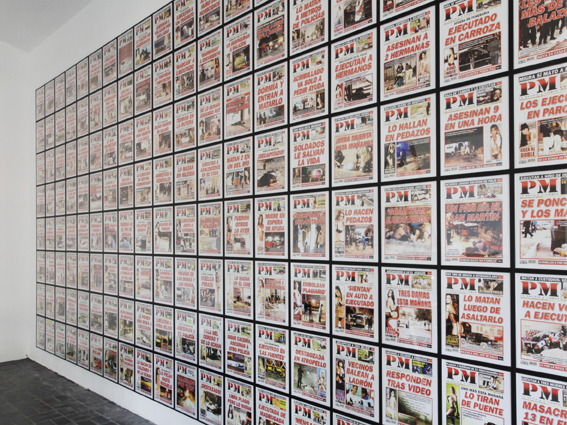A group exhibition showcasing a handpicked selection of emerging photographers is more often than not going to prove interesting and, in this regard, the 10th Gallery of Photography Artist’s Award exhibition Showcase does not disappoint. On view are works displaying a broad range of approaches from the process of photography to the artistic concerns and motives. While all the works are founded on relatively compelling concepts, there are a number which make a more immediate impression than others, including both the gallery and visitor selected winners.
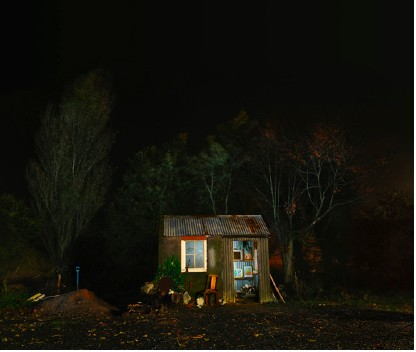
Patrick Hogan: Prayers
giclee print
2010
Image courtesy The Gallery of Photography.
Last year’s winner, Stephen Ahern, produced a solo show which emerged from his interest in documenting his surroundings as he found them. It is interesting that this year’s winner, Patrick Hogan, also partially explores this concept but, while some of these images are captured as they were found, others have been carefully composed before being shot. It is up to us to decide which is naturally captured and which is purposefully staged. Prayers, one of the most absorbing works in the show, embodies this perfectly, depicting a simple cabin in a clearing of trees, akin to the cabins undoubtedly found in rural Ireland at one time, and possibly even now on rare occasions. Religious icons within are framed by the open door, while a skull, often a symbol of life’s transient nature, sits on the ground. This isolated and humble abode stands alone, paused in time, surrounded by a lingering sense of unease.
According to the press release, Hogan’s current interest lies in accumulating a selection of images that form a “photographic short story.” Solitary, half mad is a collection of photographs captioned with a series of short phrases on Hogan’s website, however, in the exhibition space, the photographs alone tell the story. Similarly, Prayers is followed by a series of interior and exterior images, possibly but not necessarily linked to the cabin. The sequence culminates with the haunting Behind the Garden Wall, where an unsettling contrast of deep shadows and strong light turns an image of trees into a mysterious and slightly unnerving landscape, leaving the story open-ended.
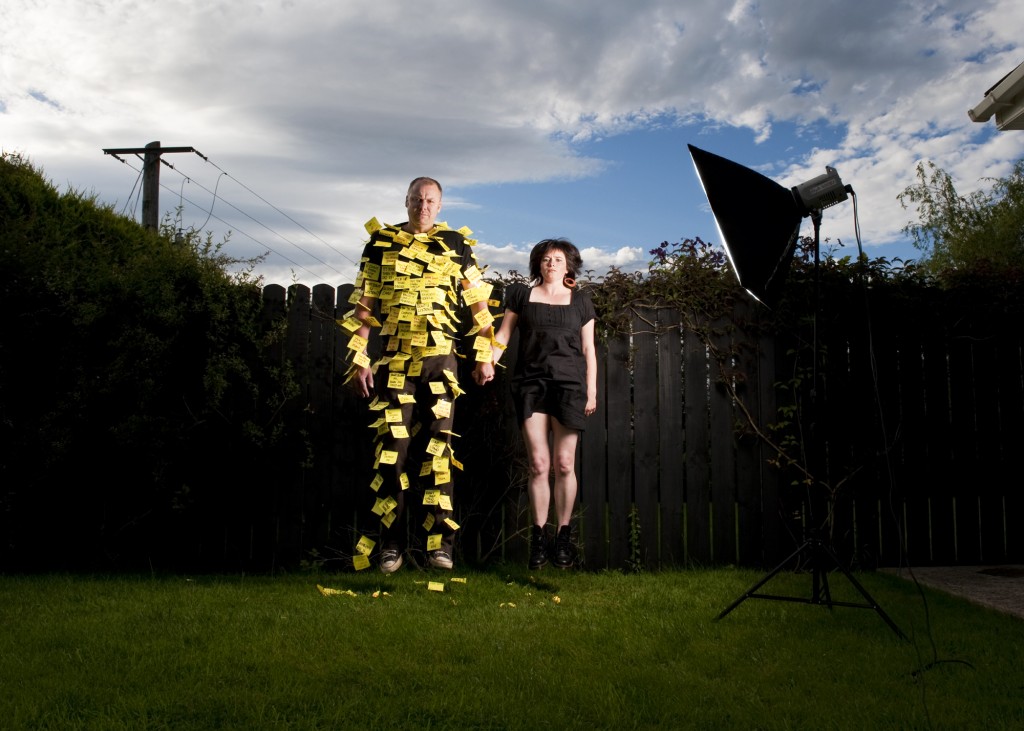
Kirsty O’Keeffe: 7 Priory Lawn
lambda print on dibond
2010
Image courtesy the artist.
Kirsty O’Keeffe takes a different approach for her collection. The omnipresent soft box set up and lighting from the side, gives a sense of weight and 3-dimensionality to the work. Her subjects, found in a variety of theatrical and expressive situations often appear futile and absurd. Some appear unwittingly observed, while others look directly at the viewer. One wall is dedicated to a large panel of postcard-sized images; a collection of events portrayed by image sequences. O’Keefe’s work feels charged with energy and wry humour. Shifting indoor scenes to the street plays with the viewer’s perception and alludes to the notion of the ‘outside looking in,’ as well as the suburban curiosity of knowing what goes on behind your neighbour’s walls.
If O’Keeffe’s observations are communicated in an orchestrated fashion, Ivor Prickett’s are relayed in a much more subtle manner. A documentary-style assortment of images portray the lives of a community, once agriculturally abundant, now isolated in a neglected region shouldering a disputed borderline. Scenes from everyday life capture a sense of stillness, of waiting, and of the necessary continuation of daily routines despite the uncertainty of their situation: children at school, farmers tending to their fields, women at work and the young looking after the sick. In one beautiful shot, a young girl, symbolically saddled with the large handbag of an adult woman, stretches to light a candle. while a man to the side holds his head in quiet weariness. The scene, with religious imagery in the backdrop, implies an innocence – a sense of hope and faith that all will eventually be as it was. Prickett’s portraits are imbued with calm, offering a subtle invitation to contemplate the situation of these people.
Sabina McMahon’s contribution – a welcome break from the norm of contemporary photography – explores the grey area between fact and fiction. In reinventing vintage photographs, she raises the issue of the photographer’s ability to manipulate imagery, altering the image and thus giving it new meaning. In an industry where the pros and cons of digital enhancement can be a contentious issue, this light-hearted approach results in a visual treat.
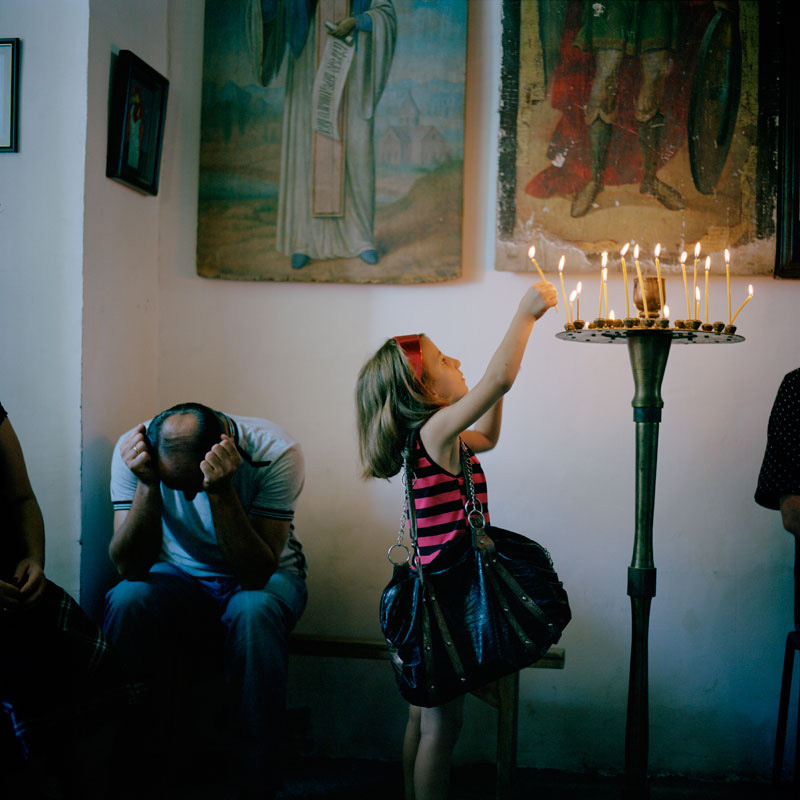
Ivor Prickett: A Young Mingrelian Girl Lights a Candle
digital c type print
Image courtesy of the artist.
Francis O’Riordan’s collection depicts the invasion of artificial light on nature and subsequently, our growing dependence on it. The dark scenes, taken in Kerry’s Black Valley, are disrupted by the glaring headlights of cars driving through the valley.
Michele Horrigan’s documentary-style contribution of prints and video pieces explores the impact of factories on the environment and the communities affected.
Patrick Fitzpatrick’s dark landscapes, highlighted with rays of light, capture the natural beauty and stillness of desolate landscapes. His photographs offer fleeting moments where the fall of light can turn something common into something breathtaking.
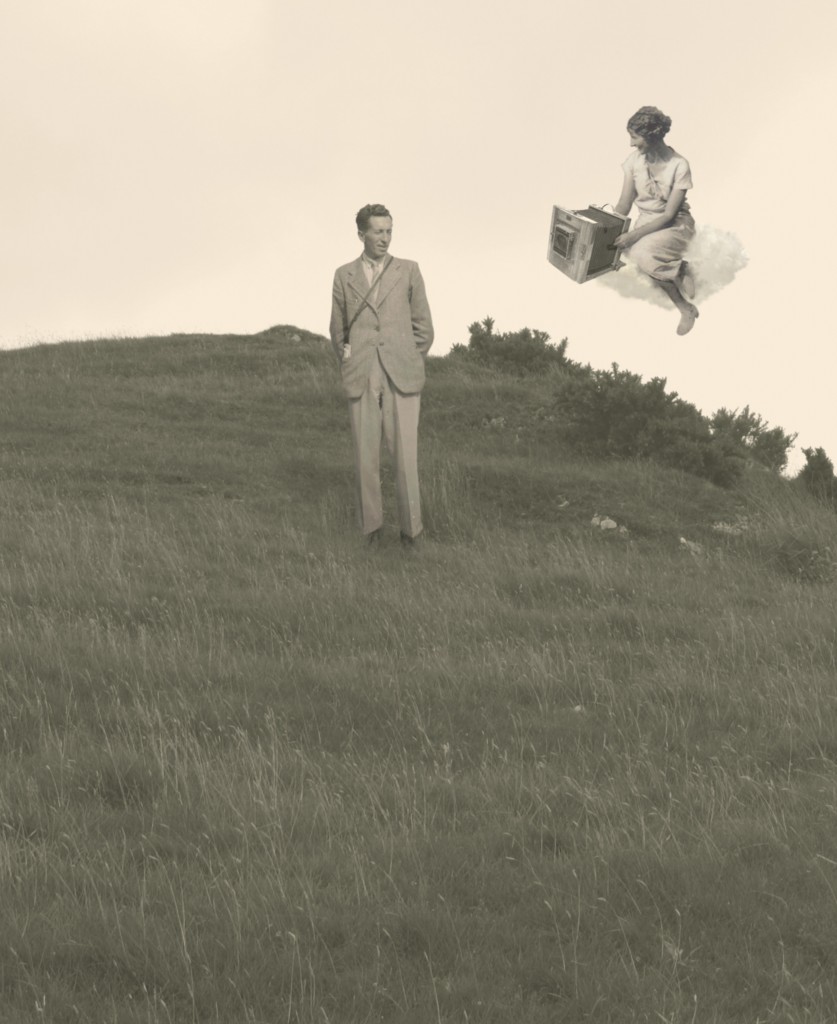
Sabina Mac Mahon: St-1. Oliver Plunkett in Receipt of a Tailboard Camera at Loughcrew Cairn
2010
unique
Image courtesy the artist.
Liam Murphy’s natural portraits capture passersby on Dublin’s Baggot Street Bridge. He attempts to show “private emotions in a public setting.” Murphy offers minute details to scrutinise: the pursing of the lips, a hand to the forehead. A simple, but compelling query into the complexities of human behaviour and emotion.
Showcase demonstrates photography’s range of possibilities as a tool and the vitality, creativity and curiosity found amongst Ireland’s emerging photographers. The documentary, the timeless romanticism of landscape, and the theatrical are all employed in Showcase. However, what resonates is the anticipation of what we can hope to see from these photographers in the future.
Roisin Russell lives and works in Dublin.


